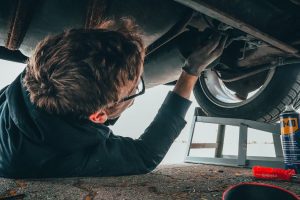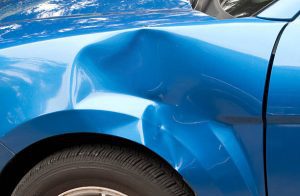Troubleshooting Common Car Problems


Troubleshooting Common Car Problems


Introduction
Owning a car provides us with convenience and mobility, but it also comes with its fair share of challenges. From time to time, our vehicles may experience common problems that can disrupt our daily routines and cause frustration. However, understanding these issues and knowing how to troubleshoot them can save us time, money, and unnecessary stress. In this article, we will explore some of the most common car problems and provide step-by-step troubleshooting solutions to help you get back on the road quickly.
1. Dead Battery
A dead battery is one of the most common car problems and can leave you stranded if not addressed promptly. Here’s how to troubleshoot a dead battery:
1.1 Check for Battery Corrosion
Open the hood and inspect the battery terminals for any signs of corrosion. Corrosion appears as a white, powdery substance around the terminals. If present, use a mixture of baking soda and water to clean the corrosion and ensure a solid connection.
1.2 Jump-Start the Battery
If the battery is dead, you can jump-start it using jumper cables and another vehicle with a charged battery. Connect the positive (red) cable to the positive terminals of both batteries, and then connect the negative (black) cable to the negative terminal of the charged battery and a metal surface on the dead car’s engine block. Start the working vehicle and let it run for a few minutes, then attempt to start the dead car.
1.3 Replace the Battery
If jump-starting the battery doesn’t work or the problem persists, it may be time to replace the battery. Consult your car’s manual or seek professional assistance to ensure you select the correct battery size and type for your vehicle.
2. Engine Overheating
Engine overheating can lead to severe damage if not addressed promptly. Follow these troubleshooting steps if your engine is overheating:
2.1 Check Coolant Level
Ensure that your car’s coolant level is sufficient. Wait for the engine to cool down before opening the radiator cap and checking the coolant level. If it’s low, top it up with a mixture of coolant and water as recommended by your car’s manufacturer.
2.2 Inspect the Radiator and Cooling System
Inspect the radiator for any signs of leaks or blockages. Check the radiator hoses for cracks or leaks as well. Additionally, ensure that the radiator fan is working correctly. If you notice any issues, such as leaks or a malfunctioning fan, consult a professional mechanic for further assistance.
2.3 Replace the Thermostat
A faulty thermostat can cause engine overheating. If you’ve ruled out other issues, such as low coolant and radiator problems, it may be necessary to replace the thermostat. Consult your car’s manual or seek professional help to ensure the correct replacement part is used.
3. Squeaky Brakes
If your brakes are squeaking, it’s crucial to address the issue promptly for safety reasons. Here’s how to troubleshoot squeaky brakes:
3.1 Clean the Brakes
Squeaky brakes are often caused by a buildup of brake dust and debris. Use a brake cleaner spray to clean the brake rotors and pads thoroughly. Be sure to follow the instructions on the brake cleaner product for safe and effective use.
3.2 Inspect the Brake Pads
Check the brake pads for wear and tear. Worn-out brake pads can cause squeaking. If the pads are significantly worn, they should be replaced by a professional mechanic.
3.3 Lubricate Brake Components
Apply a thin layer of high-temperature brake grease or anti-squeal compound to the back of the brake pads. This helps reduce friction and eliminate squeaking noises.
4. Check Engine Light
The check engine light can illuminate for various reasons, indicating a potential issue with your vehicle. Here’s how to troubleshoot the check engine light:
4.1 Check for Loose Gas Cap
A loose or faulty gas cap can trigger the check engine light. Ensure that the gas cap is tightly secured. If the light persists, move on to the next step.
4.2 Scan for Error Codes
Visit an auto parts store or use an OBD-II scanner to retrieve the error codes from your car’s onboard diagnostic system. The error codes will help identify the specific issue triggering the check engine light. Refer to your car’s manual or search online for information related to the specific error code.
4.3 Address the Identified Issue
Once you have identified the problem through the error code, determine whether it is something you can resolve yourself or if it requires professional assistance. Minor issues, such as a faulty sensor, may be fixable with some troubleshooting, while complex issues may require the expertise of a qualified mechanic.
Conclusion
By understanding and troubleshooting common car problems, you can save yourself time, money, and stress. Remember to always prioritize safety and consult a professional mechanic if you’re unsure about any troubleshooting steps. Regular vehicle maintenance and addressing issues promptly can help keep your car running smoothly and prolong its lifespan. With the knowledge gained from this article, you’ll be better equipped to handle common car problems and get back on the road with confidence.








